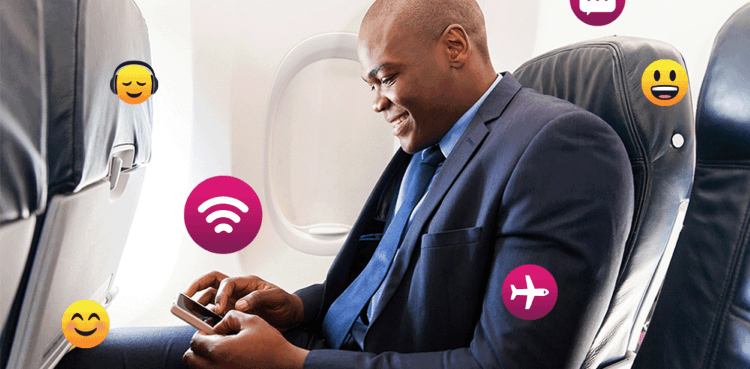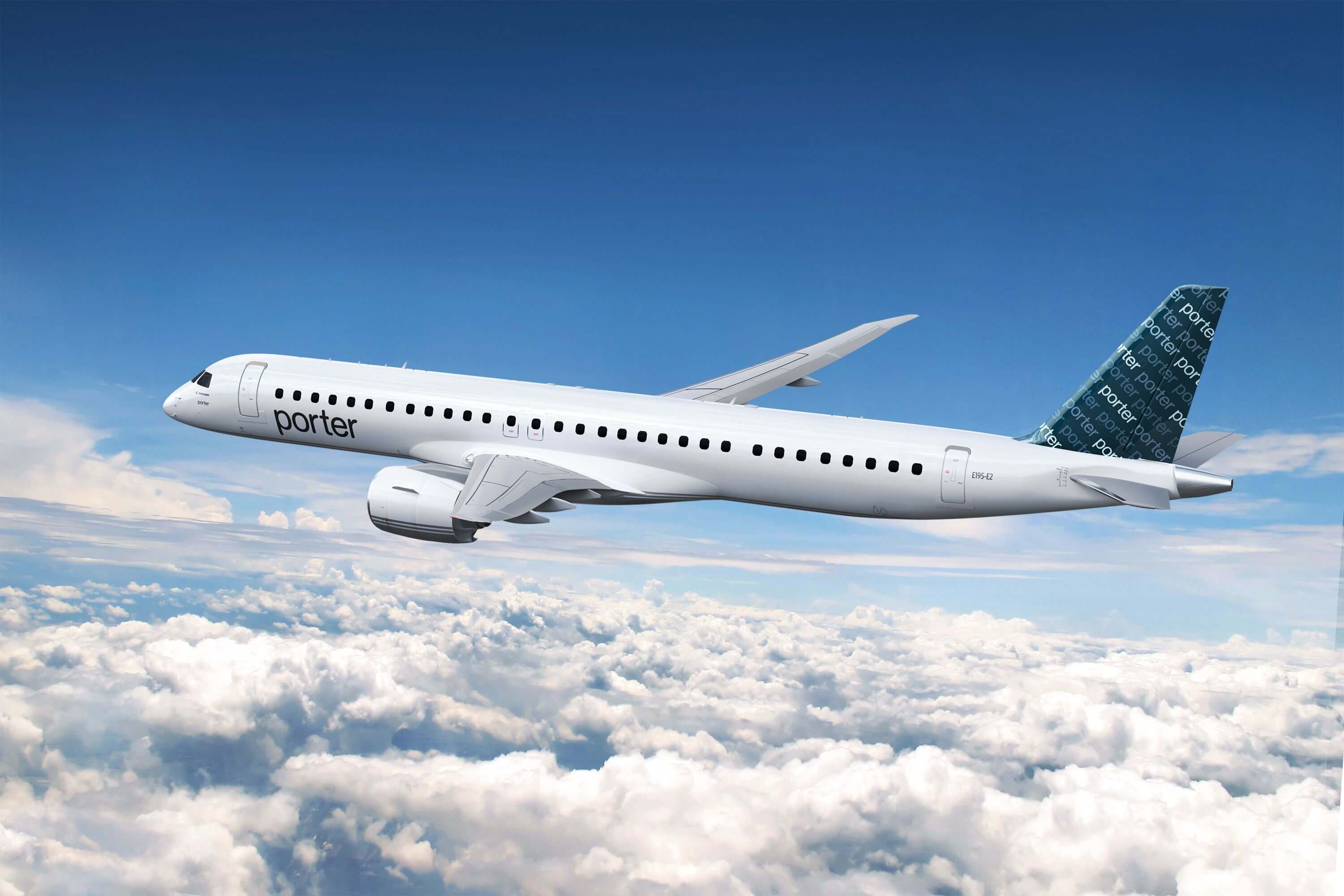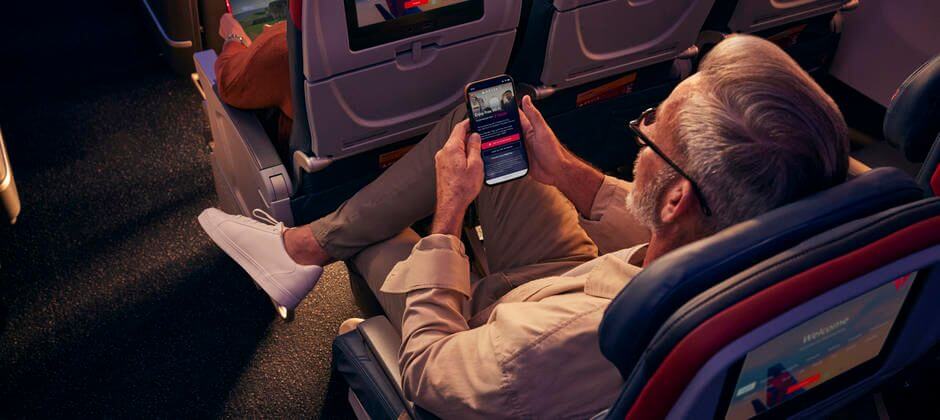Airlines move to make Wi-Fi free for all
This is a special feature from PAX Tech’s 2023 April/May Seating & IFEC issue on page 14.

A growing number of airlines either offer unrestricted free inflight Wi-Fi or plan to introduce complementary cabin-wide connectivity
Airlines have long sought to solve the dilemma of offering free Wi-Fi while simultaneously recouping the often huge investment in such satellite services. Consequently, there are now a variety of flavours of “free” inflight connectivity, dependent upon a range of factors including loyalty class, cabin class, flight time, data package and service application.
Earlier this year, Singapore Airlines extended its complimentary inflight Wi-Fi to all Suites and First Class passengers regardless of status, as well as its PPS (Priority Passenger Service) Club members and PPS Club supplementary card holders. Previously, Business Class customers and PPS Club members enjoyed 100 MB worth of complimentary inflight Wi-Fi. PPS is the airline’s program that rewards its highest-spending frequent flyers.
In addition, members of SIA’s KrisFlyer loyalty program now receive free three-hour Wi-Fi plans when travelling in Premium Economy Class and free two-hour Wi-Fi plans when travelling in Economy Class. In the past, both were offered a two-hour complimentary inflight Wi-Fi plan that was available for text-only messaging services.
First mover
In 2007, JetBlue became the first U.S. domestic carrier to provide complimentary inflight e-mail and instant messaging services, using customized inflight versions of Yahoo! Mail and Yahoo! Messenger. Passengers with Wi-Fi-enabled BlackBerry smartphones could access their corporate and personal e-mail.
A decade later, the airline became the first to offer free, high-speed Wi-Fi available gate-to-gate, with its Fly-Fi service in partnership with Amazon. The partnership allowed the airline to deliver Amazon Video streaming entertainment to passengers via personal devices as well as web surfing and chatting on messaging apps.
Fast forward more than a decade and JetBlue’s position as an innovator in the provision of free Wi-Fi can be considered even more revolutionary in the context of a series of recent announcements.
Things to come
Passengers in all cabins on Qantas’ forthcoming A350, which will fly non-stop from Australia to New York and London from late 2025, will have access to complimentary high-speed Wi-Fi and Bluetooth connectivity across their devices. The service, in partnership with Viasat, will be introduced following the completion of key satellite launches covering the Qantas international network.
In spring 2022, Starlink officially entered the inflight connectivity market with the announcement that Hawaiian Airlines had selected the SpaceX company to provide high-speed, low-latency broadband internet access to every passenger onboard flights between the islands and the continental U.S., Asia and Oceania. The airline will equip its A330 and A321neo aircraft, as well as an incoming fleet of 787-9s, with Starlink’s LEO (Low Earth Orbit) satellite internet connectivity service.
Installations are expected to begin this year on select aircraft — excluding Hawaiian’s 717s that operate short flights between the Hawaiian Islands.
Kris Tanahara, Managing Director, Corporate Communications at Hawaiian Airlines, tells PAX Tech, “We look forward to having the best connectivity experience available in the air with Starlink. It was important to us to have a superior Wi-Fi product for our guests that was fast, seamless and free to complement our award-winning onboard Hawaiian hospitality.”

Kris Tanahara,
Managing
Director,
Corporate
Communications
at Hawaiian
Airlines
The beginning of 2023 saw further announcements as Starlink signed more regional agreements. In early January, Latvian airline airBaltic announced it will equip its entire A220-300 fleet with Starlink becoming the first airline in Europe to launch high-speed, unlimited, free-of-charge satellite internet on board.
The airline has since launched an internal initiative to explore and generate ideas for the wider use of the service, be it from an individual passenger point of view or companywide. The initiative is part of airBaltic’s ideaHub, an established internal innovation and idea generation system. It aims to improve the airline’s passenger service and drive efficiency within the company.
airBaltic is working with SpaceX to achieve the required supplemental-type certification approval and is expected to begin installations across the whole fleet.
And recently, ZIPAIR Tokyo became the first Asian airline to sign up with Starlink. It too is working through an engineering review and regulatory certification process for the installation.
The time is now
While these installations are still some way off, Canada’s Porter Airlines provides free Wi-Fi to all passengers aboard its new E195-E2 fleet via partner Viasat. Passengers can use personal electronic devices, surf the web or stream entertainment from platforms such as Netflix and AppleTV.

Porter Airlines’ free Wi-Fi service is supported by adverts
According to Kevin Jackson, Executive Vice President and Chief Commercial Officer for Porter, the airline believes that high-quality Wi-Fi that supports unlimited streaming on board will become the standard for airlines in the next decade.
“More and more, passengers expect to be connected while in flight, and with the technology now available, carriers will need to offer full connectivity in order to remain competitive,” Jackson tells PAX Tech. There is also a selection of free IFE content to choose from that does not require Wi-Fi access, he adds.
Porter’s service is supported by advertising. If the passenger logs in as a VIPorter member, they will only see an ad at the beginning of their session. They can also join the program for free at any time during the flight to view unlimited content after watching the single ad. If they are not logged in as a VIPorter member, they will see an ad every 30 minutes.
According to Jackson, Porter’s complimentary Wi-Fi has received an overwhelmingly positive response from passengers, with many connecting on multiple devices to work and stream simultaneously. The ratio of connected devices to passengers is often greater than 1:1, he reveals.
The biggest news of the year came as Delta Air Lines used the occasion of Consumer Electronic Show 2023 in Las Vegas (owned and produced by the Consumer Technology Association) to announce plans to bring free Wi-Fi to all its international and regional aircraft by the end of 2024.
The service, in partnership with T-Mobile, launched on more than 500 domestic mainline aircraft this February. Since then, the airline reports that more than 100,000 passengers have signed-up for Delta SkyMiles, with more than 2.1 million free Wi-Fi sessions launched onboard. As of March 1, the service is available on more than 540 aircraft.
Also in March, Delta and Viasat announced plans to bring Ka-Band inflight satellite connectivity onboard Delta’s international widebody fleets, with upgrades beginning this year.

By 2024, all Delta Air Lines aircraft will offer free Wi-Fi to all passengers. In its first month of service, more than 2 million free Wi-Fi sessions had been recorded
“We didn’t just want free Wi-Fi to offer base-level service — we wanted it to be transformative for the entire onboard experience,” said Delta CEO Ed Bastian in a January 27 company press release.
Ed Bastian, CEO of Delta Air Lines. Image credit: Rank Studios for Delta Air Lines
T-Mobile also partners with Alaska Airlines, American Airlines and United Airlines offering its Coverage Beyond customers free inflight connectivity. In addition to texting, browsing and e-mailing, T-Mobile customers can also stream, where available.

